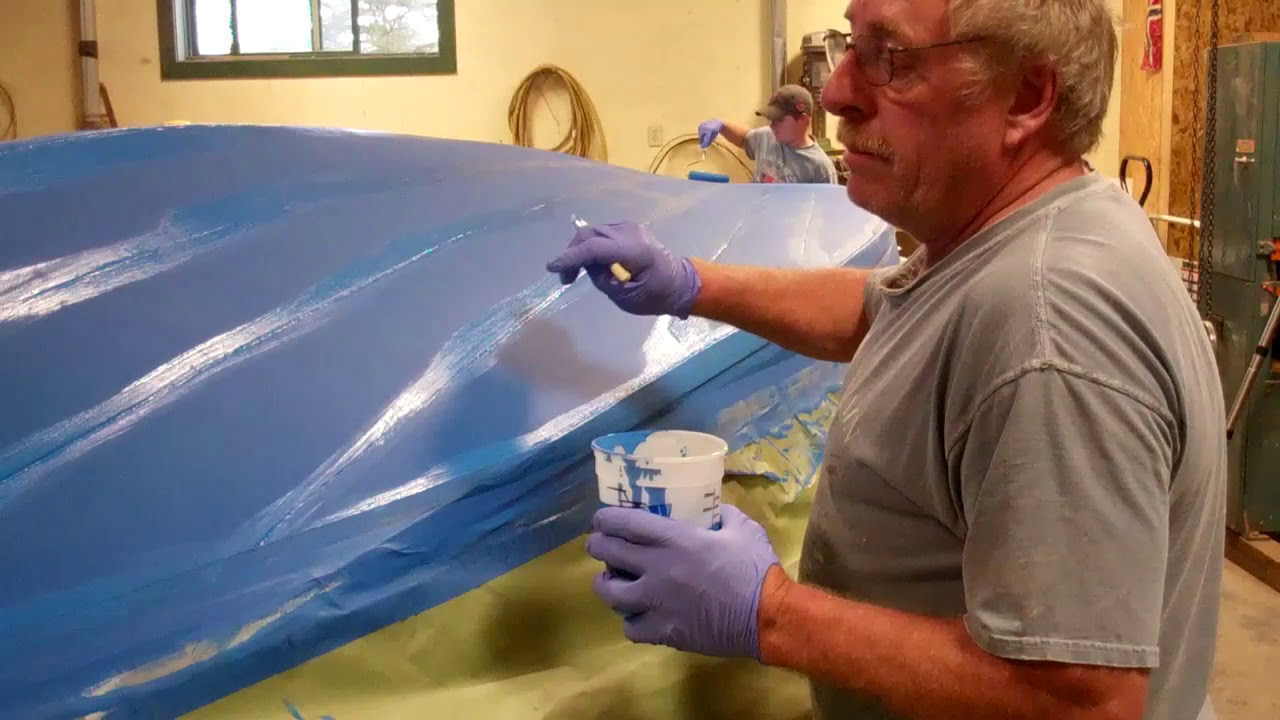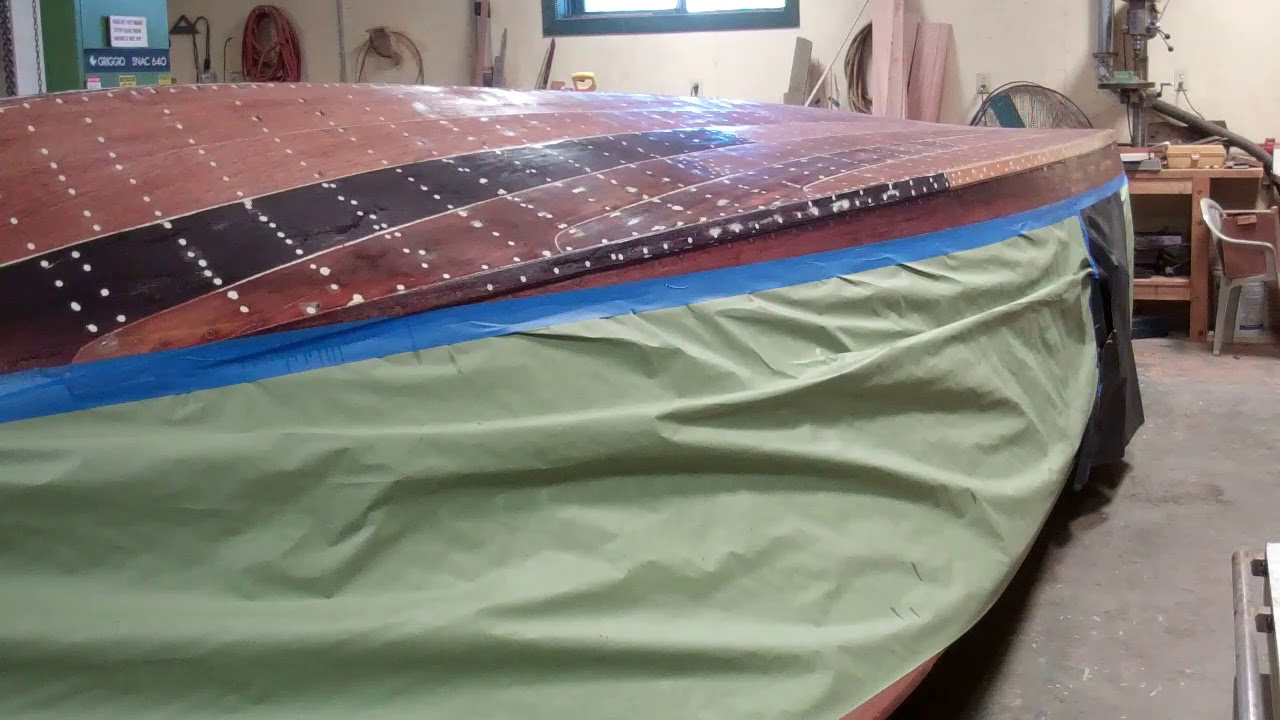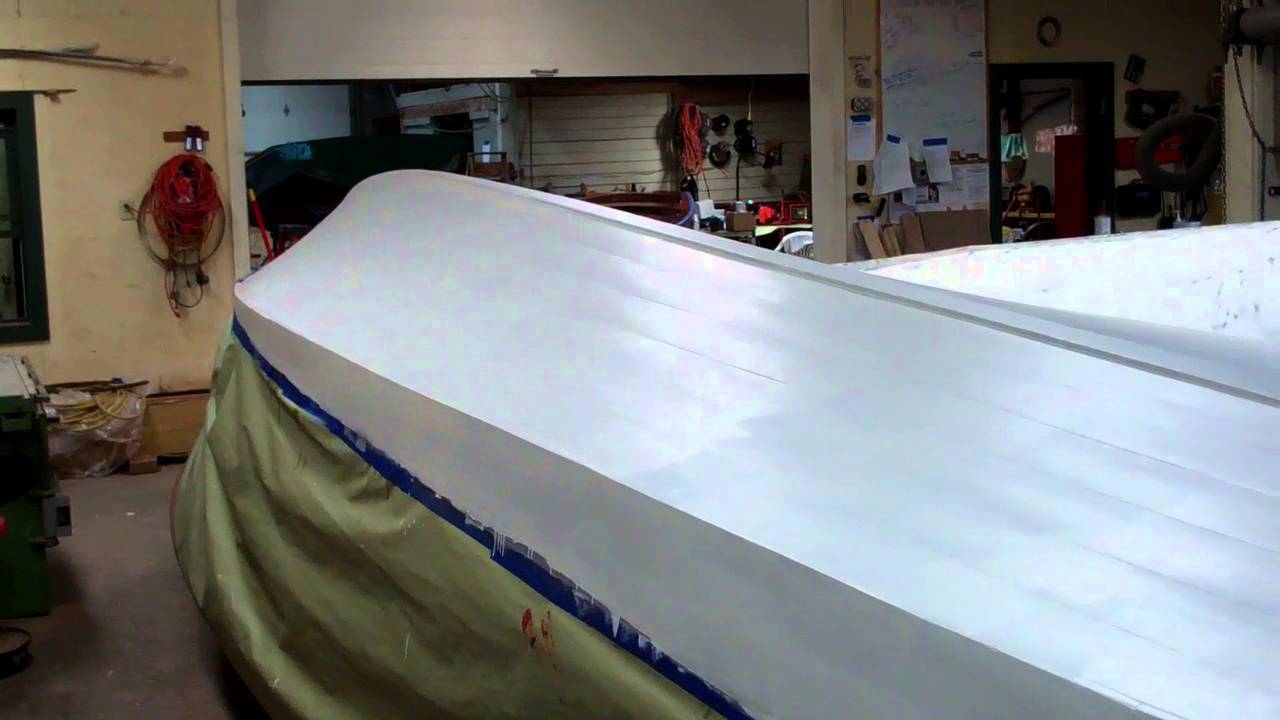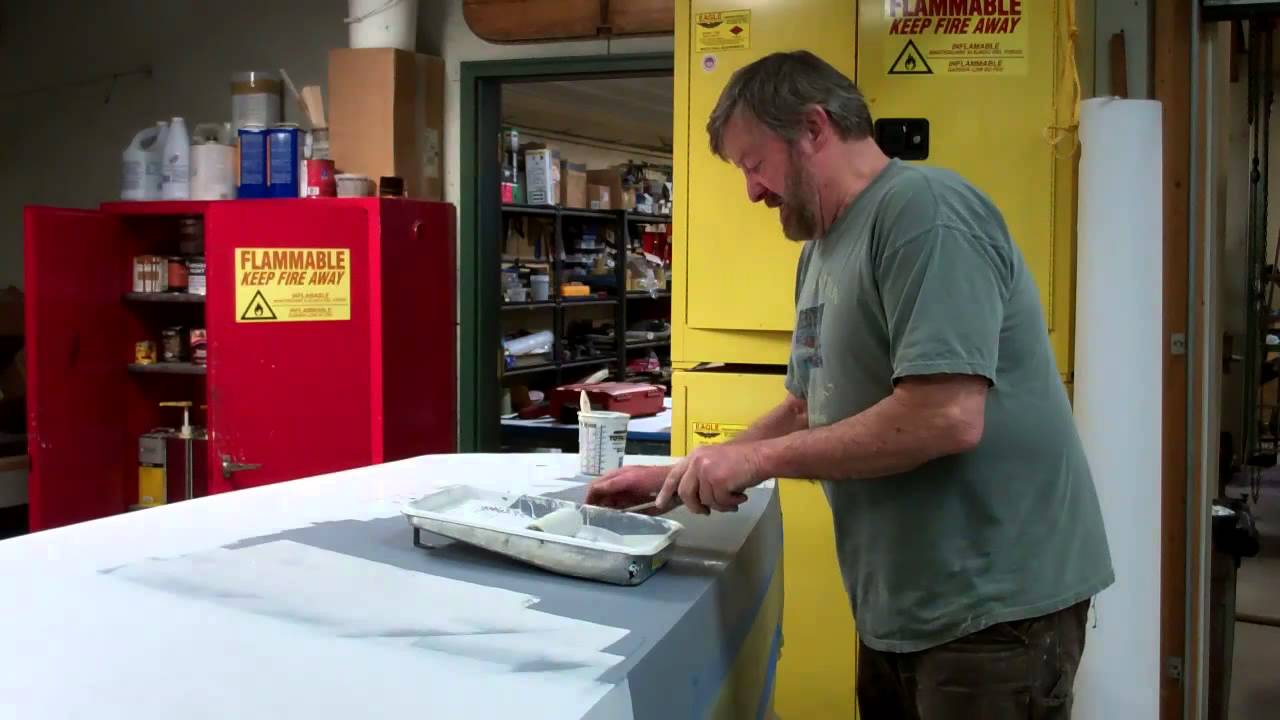Since the last update video, we have applied five coats of Interlux 2000E two-part primer, followed by the requisite blue bottom paint, ePaint’s Ecominder Antifouling Bottom Paint in this case.
One more coat of ePaint Ecominder, a water-based one-part antifouling paint and this 1946 brightside U22’s True 5200 bottom is complete.
What is ePaint Ecominder antifouling paint? Here is what Jamestown Distributors answers:
New ePaint Ecominder is the greenest and most effective copper-free antifouling paint available.
Ecominder uses a copper-free, water-based, zero VOC paint formula that is safe and easy to apply. It keeps boat hulls clean using hydrogen peroxide generated from sunlight and the environmentally preferred booster biocide Zinc Omadine.
Designed for use on all rigid type surfaces including fiberglass, aluminum, and wood, it is compatible over other bottom paint systems, and can even be applied in cool ambient temperatures. It is very popular in the pontoon market due to its compatibility with aluminum substrates. Ecominder is available in a variety of colors including White, Gray, Green, Blue, and Black.
ePaints contain no tin or copper. Instead of following the age-old method of leaching toxicants that persist in the environment, ePaints employ a novel mechanism to control the attachment of fouling organisms. When immersed in oxygenated water, all ePaints photochemically generate minute levels of peroxides. The minute levels of peroxides make the surface inhospitable to the settling larvae of fouling organisms. Hydrogen peroxide is a potent, but short-lived chemical that has traditionally been used as an antiseptic. Peroxides have been demonstrated to be effective antifouling agents. The peroxides do not persist in the environment because they quickly decompose back into oxygen and water by natural ions dissolved in the water.
Because ePaints contains no copper, they are available in white as well as a variety of bright colors. The lack of copper also ensures that ePaints are compatible with aluminum and other metals in the marine environment. This is not the case with copper-based paints that promote galvanic corrosion with metal boats. ePaints are safer for you, your boat, and our environment.
With a home port of Ahmic Harbour in Magnatawan, Ontario, this U22 lives and plays on one myriad of lakes in Canada’s Muskoka lake region where the water remains clear and pristine. By using Ecominder on her bottom, we ensure that, at least she, will introduce no additional copper to Ahmic Lake. That the paint is water-based, has zero VOCs is a plus for us while applying it in the shop. One more coat, then the paper comes off. One the remaining topside Dutchman repairs are executed and the entire surface, including the transom’s, is sanded fair, she will be flipped upright for the first time in over seven months.
We are just beginning to see a glimmer of the finish line peeking over the horizon!




